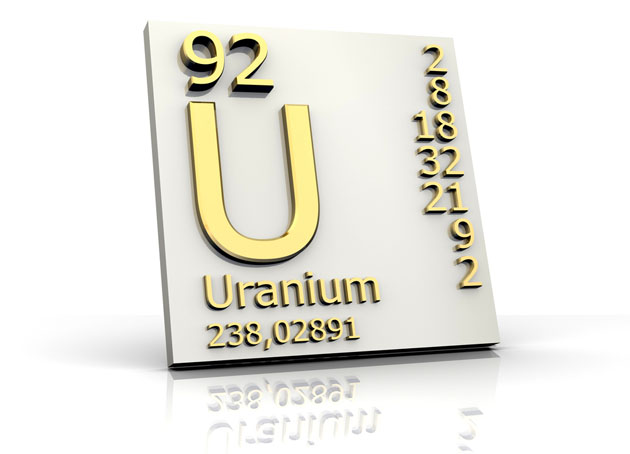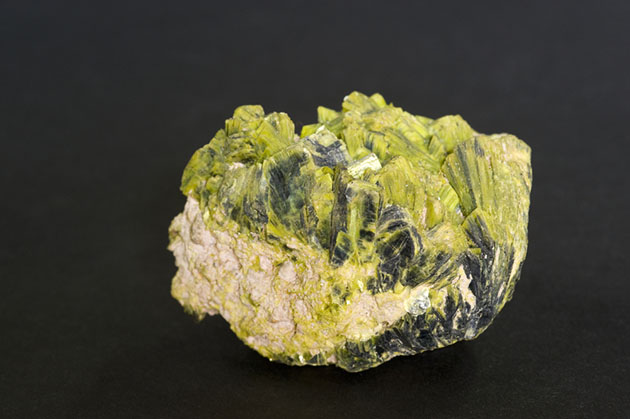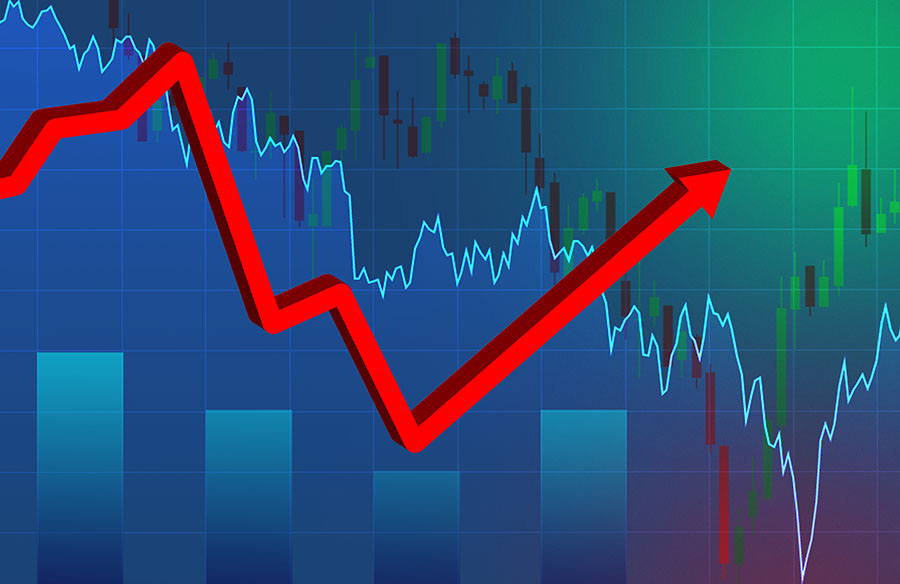The Energy Report: A lot has happened in the energy markets since your last interview. What are the most significant changes in the space?
Elliott Gue: The Gulf oil spill in May 2010 and the Fukushima event in March 2011 were the two most pivotal events of the past two years. The repercussions of the Gulf spill extended for over a year. Fukushima dramatically changed the policy toward nuclear energy in Japan and in Germany and caused a surge in global natural gas prices due to increased Japanese demand, Japan having suddenly lost about 30% of its power. Japan has since built new natural gas plants, which are the only plants that can be brought onstream very quickly to generate large amounts of power.
Meanwhile, Germany, which has always had somewhat of an anti-nuclear stance going back at least to Chernobyl, reverted to its pre-Merkel policy of wanting to phase out all nuclear power by 2022. About one-third of German power comes from nuclear energy. It immediately shut down all of its plants built before 1980 and plans to phase out all the remaining nuclear plants by 2022. The leading candidate for replacing them is natural gas, which has caused European gas prices to spike even further. Over the last several months, gas prices in Europe have been as much as four to five times higher than in the U.S.
TER: Can Germany and Japan continue to deal with gas prices that high without serious economic repercussions?
EG: Most of those costs are borne by the German consumer rather than German industry. German power prices are the second highest in Europe because they are indirectly used to subsidize alternative energies, such as wind and solar, and that's become extremely expensive. Major manufacturing industries have been the core of Germany's economy for decades, and a lot of those companies aren't faced with the same degree of price increases that the German consumer now faces.
However, Europe's higher energy prices are a big positive for the U.S. The glut of U.S. natural gas has prices trading near decade lows. That provides a major energy cost advantage for the U.S. relative to Europe and even emerging markets like China, and U.S. manufacturing activity has benefited as a result. One of the most dramatic and earliest examples is base chemicals companies. Because of the surge in U.S. natural gas and gas liquids production, U.S. production costs for certain basic chemicals are actually lower than in Kuwait or Saudi Arabia. A large number of U.S. chemical plants that had been mothballed have restarted, with new plants being built and existing facilities expanded.
The negative public sentiment toward nuclear power in Japan has softened somewhat, and the country has backtracked on some of its earlier plans to permanently close nuclear capacities. Over the summer, Japan actually restarted a number of plants because there was a real risk that there would have been a shortage of electricity during the hot summer months. I do think that nuclear power outside of Germany and Japan is likely to continue to see some growth.
TER: How have these cataclysmic events influenced your decision-making as an energy investor?
EG: Both were examples of very extreme black swan events with a very low probability, but nonetheless huge market repercussions. In both cases, investors overreacted and panicked, which often produces some of the best buying opportunities.
The Gulf oil spill created a moratorium on deepwater drilling. Many people expected that to last for years, but it only spanned one year. A lot of people were surprised at how quickly the Gulf has recovered. But oil breaks down very quickly in the warm waters of the Gulf, which has microorganisms that essentially eat oil or aid in its breakdown over time.
Stocks of companies with leverage to deepwater drilling were absolutely killed in the wake of the Gulf oil spill. Many were down 30–40% or more. Companies that were directly related to it were hit even harder, like BP Plc (BP:NYSE; BP:LSE) or Anadarko Petroleum Corp. (APC:NYSE). But it was really a great opportunity to buy stocks that are involved in deepwater drilling activity. Two years after the event, a lot of the services companies are seeing revenues from deepwater drilling in the Gulf back to pre-crisis levels. Permitting activity for new wells is also reaching pre-spill levels.
Fukushima had a similar effect. A lot of companies leveraged to nuclear power got hit really hard. A year and a half later, nuclear construction activity is resuming in many emerging markets, and developed markets are reaffirming their commitment to longer-term use of nuclear power. Only Japan and Germany have meaningfully changed their policies toward the power source.
TER: How did your stock purchases in those spheres work out for you?
EG: The purchases around those panic moments have been some of the best we've had, particularly in the immediate wake of the Gulf oil spill. The negative headlines created a lot of panic and many people were tempted to sell out of any stock that had anything to do with the Gulf. But we found a lot of opportunities back then, and those have been some of our top-performing plays ever since.
One example is a deepwater contract driller called Seadrill Ltd. (SDRL:NYSE). It owns a fleet of rigs used for drilling in ultra-deep waters, 10,000 feet (ft) and more. That stock, like most other deepwater drilling companies, was really slammed after the Gulf spill even though it had absolutely no rigs in the Gulf at that time. What it did have was long-term contracts with producers that had locked up its rigs under multiyear deals at fixed rates. It also has some of the newest and most powerful rigs out there, and these are crucial for drilling particularly deep wells—some over 30,000 ft—in particularly deep waters. The company also has much more powerful blowout preventers than the one that failed on the Deepwater Horizon in the Gulf spill. It also has a number of new rigs scheduled for delivery over the next few years. Not least of all, the company has a great policy of passing through the majority of its cash flow in the form of dividends to shareholders. As it brings new rigs onstream over the next two to three years, it will be able to significantly boost its dividends, providing a nice upside catalyst for the stock.
TER: We've rehashed the past. Let's talk about the future. What's next on the energy horizon?
EG: Deepwater drilling is still hitting the sweet spot of the cycle. Activity levels in places like the Gulf are again reaching new highs and a number of new deepwater markets are coming to the fore. Historically, about three-quarters of all deepwater spending activity has been focused on what we call the deepwater golden triangle, which includes offshore Brazil, the Gulf of Mexico and offshore West Africa. Nigeria and Angola were once the hubs of West Africa, but now we're seeing to the emergence of new deepwater West African markets like Ghana, the Ivory Coast and Sierra Leone.
In East Africa, a number of countries that produce little or no oil or gas are sitting on potentially some of the largest natural gas finds of the past 10 years. Mozambique, Tanzania and Kenya fall into that category. In Tanzania, there have been a number of large gas finds. Apache Corp. (APA:NYSE) recently started drilling the first ever deepwater oil well off the coast of Kenya. There have also been a number of oil slicks spotted on the surface of the Indian Ocean in that region, suggesting that oil may be naturally seeping up from the sea floor.
Another example of an exciting, newer deepwater market would be the Barents Sea in the Arctic off the coast of Norway. A number of finds have been made in that region, and those plays will also require deepwater rigs. A producer like Exxon Mobil Corp. (XOM:NYSE) or a Chevron Corp. (CVX:NYSE) would go to a company like a Seadrill and contract a rig for a five-year period to drill a number of wells in a particular area, putting that rig off the market.
There are really only a couple of rigs available for hire over the next 18 months that aren't already locked up under long-term contracts and that are sufficiently advanced to drill these deepwater projects. There may be some older, "midwater floaters" that are capable of drilling in shallower waters or drilling shorter wells, but they're not really appropriate for a lot of the recent ultra-deepwater finds. As a result, companies like Seadrill are able to raise prices and they are seeing a real boost to their margins as a result. I believe we're in the early stages of what's likely to be a two- to three-year up-cycle for margins and activity in deepwater.
TER: What do these rigs cost to build?
EG: If you wanted to go out and build a rig right now, you'd probably be looking at a one- to two-year waiting period to even get started on construction and it wouldn't be delivered for another three years or so. The cost would be upwards of $0.5 billion (B) to construct one of the more-advanced rigs.
When day rates crossed $600K/day about nine months ago, most rigs contracted at those rates were for 18–24 month terms. Now, companies are willing to contract rigs for five-year or even longer terms at rates close to $600K/day or higher. It now appears that even the large producers believe that ultra-high rig rates are here to stay.
TER: What are some other standout companies in that business?
EG: One of the others that I like a lot is Ensco Plc (ESV:NYSE). Over the last couple of years, it has undergone a process of renewing its fleet, so it's building some new replacement rigs. Right now, Ensco pays a much lower dividend because of the capex in upgrading its fleet. But as time goes on and it's able to bring new rigs to market at very high day rates, it's highly possible that it could really boost its current 2.5–3% payout.
TER: Are any smaller companies catching your eye in this capital-intensive space?
EG: There's a relatively new smaller IPO company I really like called Pacific Drilling S.A. (PACD:NYSE), although it's not a microcap by any stretch of the imagination—it's still a $2B company. Pacific currently has four operating drill ships. All are under fairly long-term contracts at lower day rates than current market, in the $400–500K/day region. It also has two additional ships due for delivery in 2013 and the potential to build even more for delivery further in the future. That doesn't sound like a huge fleet compared to Seadrill's 18 ultra-deepwater rigs, but adding two increases Pacific Drilling's fleet by 50%.
I think Pacific has a lot of upside as a $10 stock right now as those new ships are brought into service. It could also be a takeover target for a larger company like a Seadrill or an Ensco that wants to beef up its drillship market exposure. There are not a lot of sub-$1B companies out there playing in the ultra-deepwater drilling space because of the tremendous capital costs. As a smaller play in the same industry, I think Pacific Drilling fits the bill.
TER: Who are the reigning giants in the service industry?
EG: The 800-pound gorilla in the services market is Schlumberger Ltd. (SLB:NYSE), the largest oilfield services company in the world, with a market cap around $100B. Its largest market in North America is the deepwater Gulf of Mexico, whereas a lot of the other service companies are focused on land-based drilling, like Halliburton Co. (HAL:NYSE), which is focused on shale drilling.
Schlumberger's large seismic services division is called WesternGeco, which owns a fleet of ships that tow seismic equipment that produces sound waves that go through the water and then into the bottom of the sea. These bounce off subsea rock formations, producing information that is used to create a three-dimensional view of these formations. This helps companies determine where good spots are to look for oil and gas fields. When companies drill a series of wells that might cost $1B, it's important to place them so that they produce at the ideal rate, which is where seismic data are very valuable. Just a slight difference in production rates can mean billions of dollars' difference over the life of a well.
A couple of years ago, there was a glut of seismic ships, but over the last couple of quarters, that situation has reversed and now there is a shortage. This has become one of its fastest-growing businesses, with rising profit margins. So Schlumberger is extremely well diversified and has its hands in a number of other markets. It's by no means a pure play.
A pure play on seismic I like a lot is a Norwegian company called Petroleum Geo-Services (PGS:OSE). It doesn't trade quite as liquidly as it does in Norway, but at an average volume of around 30–40,000 shares/day, it's still relatively easy to access. It's only about a $3B company. It owns a fleet of vessels used to perform seismic shoots in deepwater environments. It recently indicated that it is benefiting from some of the same trends as Schlumberger, as more companies are willing to book out their vessels well in advance. Margins for Petroleum Geo-Services are really rising as well.
TER: What's your outlook for oil, gas, nuclear power and coal over the next couple of years? What should investors be focusing on for their best possible returns?
EG: I expect oil prices to remain elevated over the next several years. I expect Brent to be averaging over $110/bbl over the next two to three years. There's a real risk of a spike in Brent prices that could be catalyzed by something as simple as a fairly short-term disruption in supplies due to problems in the Middle East, or something else. Even barring that, I expect Brent to remain north of $110/bbl on average. I think oil and any companies related to producing oil, particularly from fields in the deepwater or from international markets, will do well over the next few years.
With natural gas, we also have to make the distinction between the U.S. and other parts of the world. Because of the shale gas glut, I expect U.S. and North American gas prices to remain relatively tame for at least the next two to three years. Internationally, that market is much, much tighter. There's been a boom in demand for natural gas from places like Europe in the wake of the Fukushima disaster.
Most European countries don't have access to a growing source of domestic or friendly production. Declining oil and gas production in the North Sea is already stepping up imports. A lot of those will be in the form of liquefied natural gas or pipeline imports from places like Russia. I expect European and Asian natural gas prices to remain three to four times higher than they are in the U.S.
In natural gas, I would prefer to focus on companies leveraged to liquefied natural gas and international gas markets, and avoid companies with excessive leverage to North American gas. The only exception is companies that are building infrastructure to serve all these shale plays, such as master limited partnerships (MLPs) that are building pipelines, gas storage facilities and the like. These are going to be very needed to meet rising production from these shale fields.
With coal, once again, we have to make the distinction between North America and the rest of the world. North America has large domestic supplies of coal but the low gas prices are causing a lot of utilities to switch from coal to natural gas, keeping a lid on U.S. and Canadian steam coal prices.
With a growing population and increasing incomes, India is the fastest-growing importer of steam coal in the world. I think we'll continue to see countries like China and India continue to build coal-powered power plants, simply to meet their fast-growing demand for power, regardless of some of the environmental concerns prevalent in the Western world.
In the coal market, I like names like Peabody Energy Corp. (BTU:NYSE), which is a U.S.-based mining company, but an increasingly large portion of its profits is generated from Australia, where it mines seaborne coal, most of which is exported to China and India. That market is depressed and out of favor right now, but I think the long-term potential for companies like Peabody is quite high.
Finally, with nuclear power, after the initial overreaction to Fukushima, the long-term growth trend for new facilities has continued mainly in developing markets such as India and China, which is going to build as many as 100 new nuclear plants over the next two to three decades. I think that will definitely help some of the uranium producers.
A lot of the new production potential out there requires uranium prices upwards of $80/lb to be solidly profitable, compared to the current $50–55/lb range. So I do think that uranium prices will have to rise in coming years to incentivize production to meet demand. One of my favorite companies there is the world's largest pure play uranium producer, Cameco Corp. (CCO:TSX; CCJ:NYSE) in Canada.
TER: A lot of these companies pay nice dividends in addition to appreciation potential.
EG: Absolutely, which brings up a very key point to the energy and commodity sector. There are certainly times when we have these growth scares and volatility causing stocks to correct 10–20%. You can really use that volatility to your advantage as the long-term trend remains intact. These dips and 10 or 15% corrections can be an excellent opportunity to get involved in some of these faster-growing segments of the market, such as deepwater.
TER: Thanks for your time and insights today, Elliott
EG: Thanks for having me.
Elliott Gue's semimonthly newsletter, The Energy Strategist, unearths profitable opportunities in this booming sector. He also analyzes the complexities of global energy markets for Personal Finance and more specialized publications. In addition, he is co-editor of MLP Profits, an online newsletter that identifies high-growth, high-yield partnerships through sound market intelligence. He holds a bachelor of science in economics and management and a master's degree in finance from the University of London.
Want to read more exclusive Energy Report interviews like this? Sign up for our free e-newsletter, and you'll learn when new articles have been published. To see a list of recent interviews with industry analysts and commentators, visit our Exclusive Interviews page.
DISCLOSURE:
1) Zig Lambo of The Energy Report conducted this interview. He personally and/or his family own shares of the following companies mentioned in this interview: None.
2) The following companies mentioned in the interview are sponsors of The Energy Report: None. Streetwise Reports does not accept stock in exchange for services. Interviews are edited for clarity.
3) Elliott Gue: I personally and/or my family own shares in the following companies mentioned in this interview: Seadrill, Ensco, Chevron and Petroleum Geo-Services. I personally, and/or my family are paid by the following companies mentioned in this interview: None. I was not paid by Streetwise Reports for participating in this interview.




























































